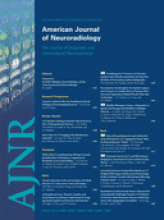We were disappointed by the recent editorial and commentary published in the American Journal of Neuroradiology—“Wherefore Wingspan?”1 and “How Do We Spin Wingspan?”2 Although we do not interpret these essays as harsh or mean spirited, they do seem to consistently advocate a predetermined agenda. Kallmes and Cloft contend that the Wingspan stent (Boston Scientific, Natick, Mass) has been made available prematurely by the US Food and Drug Administration and overused by aggressive neurointerventionists, despite the inferiority of the device to available predicate technologies. Although these are all legitimate points of discussion, we do not agree with the lines of reasoning that the authors use to support their interpretation of the present state of affairs.
We respectfully disagree with the following specific points presented by Kallmes and Cloft in their most recent commentary.2
The availability of Wingspan (by itself) has caused intracranial stent placement to “take off like wildfire.” By arguing that the availability of a new “hammer” alone has caused neurointerventionists to start recklessly charging around looking everywhere for “nails” seems somewhat myopic. We would point out that the release of Wingspan fortuitously coincided with the availability of the Warfarin Aspirin Symptomatic Intracranial Disease (WASID) trial and subset analyses, which demonstrated that selected patients—particularly those with high-grade (>70%) intracranial stenoses—had very high rates of recurrent stroke despite aggressive medical therapy.3 We would strongly argue that these data, rather than the availability of a new device, primarily drove an increase in the interventional management of this disease process. Although the number of neurologists practicing neurointervention continues to increase, the patients referred for treatment in our registry came primarily from noninterventionists seeking alternative therapy for patients whom they believed were at a high risk of doing poorly on medical therapy.
The intracranial stent restenosis (ISR) rates observed with Wingspan are “worse” than those observed with other technologies. The 30% ISR rate observed with Wingspan4 is essentially identical to those rates reported after percutaneous transluminal angioplasty with stenting (using bare metal stents) of similar-sized vessels in all other anatomic locations (including the cerebrovasculature). It is certainly very similar to the 32.4% ISR rate reported in Stenting of Symptomatic Atherosclerotic Lesions in the Vertebral or Intracranial Arteries (SSYLVIA).5 The “sticker shock” associated with the ISR rate observed in our Wingspan registry5 seems to be largely a reaction to the extraordinarily low 7.5% rate of ISR reported by Bose et al6 in the initial Eurasian Humanitarian Device Exemption (HDE) study.
HDE approval for Wingspan is unnecessary because coronary stents represent “comparable devices” available to treat intracranial atherosclerosis. Much of the available periprocedural data would suggest that the safety profiles of these coronary devices applied to treat intracranial disease are inferior to the Wingspan system.7,8 To our knowledge, evidence supporting the efficacy of coronary devices for the prevention of stroke in patients with intracranial atherosclerosis is nonexistent. Equally lacking are any sizeable studies that examine the restenosis rates of these devices at angiographic follow-up.
We should not ignore our experience with off-label use of coronary devices to effectively treat intracranial atherosclerosis. None of these alternative coronary devices has been placed under the scrutiny of a postmarket real world all-inclusive multicenter study as Wingspan has. Because the available data are essentially limited to small single-center case series, our collective “experience” comprises the biases of these single centers as well as each of our perceptions of our personal track records with these devices. From a practical standpoint, the authors also neglect to consider the increased liability that could be incurred if operators were to use coronary devices off-label when there is an approved device for neurointervention. We certainly do not reject the concept that other technologies might be superior to Wingspan—particularly for those selected lesions for which we are gathering evidence that Wingspan frequently fails. However, the systematic application of off-label devices to treat intracranial atherosclerosis can only be responsibly performed within the controlled scenario provided by an investigational device exemption study.
As the investigators at the initial centers using Wingspan in the context of a relatively controlled initial product release, we believed that we had a unique opportunity to work together to generate high-quality prospective postmarket data. We sought to report, as early as we responsibly could, on our accumulating experience with the device. We have attempted to do this in a consistently honest, accurate, and unbiased manner.
Ultimately, we can answer the authors’ question “How Do We Spin Wingspan?” Our response is simply “We Don't.” There is no reason to “spin” anything. We can only advance the field and improve patient outcomes through rigorous study and the unbiased presentation of our data.
We look forward to participating in the upcoming Stent Placement versus Aggressive Medical Management for the Prevention of Recurrent stroke in Intracranial Stenosis (SAMMPRIS) study, which will provide a more definitive assessment of the efficacy of the Wingspan system in comparison with medical therapy in a selected patient population.
References
- Copyright © American Society of Neuroradiology












